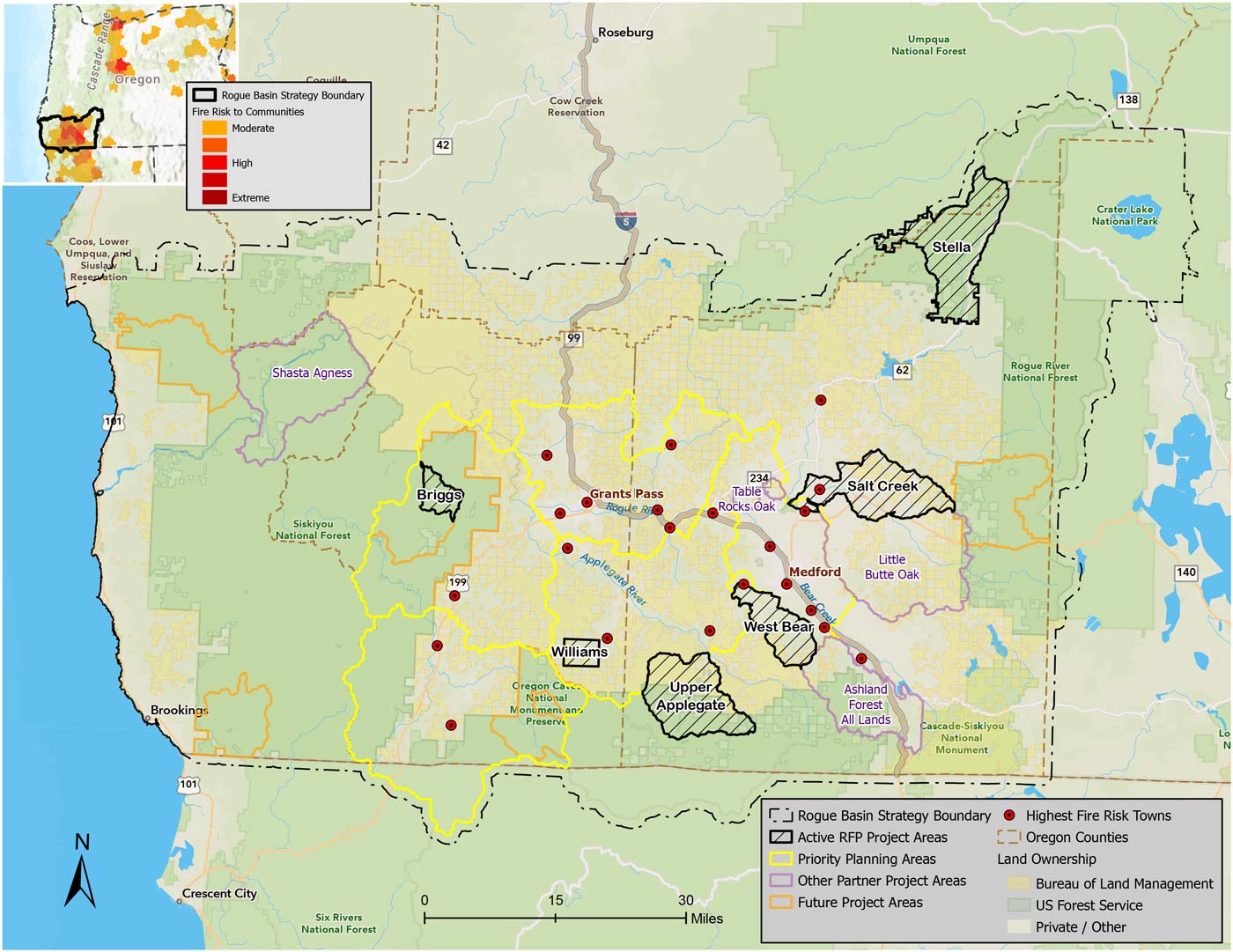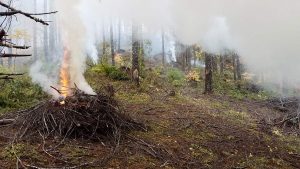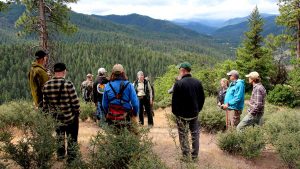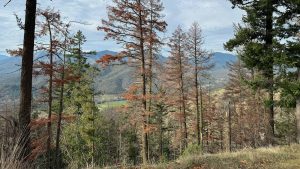Working together for forests and communities
The Rogue Forest Partners are working together with those who value our forests—communities, tribes, businesses, conservationists, public and private land managers, local governments—charting a new course.
It takes all of us, working together, to make our forests more resilient and our communities safer from wildfire.
Severe wildfires and persistent smoke are a threat to the lives and livelihoods of our communities. We offer a science-based, practical, long-term approach to forest management, informed by millennia of indigenous knowledge and best science. Our work is rooted in the belief that the connections that tie all of us to the forest are more powerful than our differences.
Who is RFP?
The Rogue Forest Partners (RFP) are a group of four nonprofits and six public agencies working as one for the communities and forests of the Rogue Basin.
Ecological Forestry
We convene experts in forestry, hydrology, public lands, wildlife, conservation, fire use, timber industry, and the traditional ecological knowledge of indigenous peoples.
Historical Changes
Frequent fires ignited by a combination of lightning and indigenous burning maintained a diversity of vegetation types in the landscape and kept the density of forests in check. Tribes of the Rogue Basin stewarded the forests and watersheds using a sophisticated application of fire to keep them in balance. Over the past 150 years, following the forced removal of indigenous peoples, decades of aggressive fire suppression combined with large tree cutting and clear cut timber management have created forest conditions that now put communities and nature at risk. Hotter temperatures and more frequent droughts are amplifying the problem, increasing the frequency of severe wildfire and threatening people, property, and habitat.
A century of suppressing beneficial fire, paired with limited investment in fuels reduction and ecologically-guided selective thinning has made dry forests across the west susceptible to increasing drought, unnaturally severe fire, insects, and disease. Current and changing conditions are speeding up this decline and elevating the need for forests adapted to fire and drought. The result is unnaturally severe fires that are increasingly difficult to control and threaten people, property, livelihoods, and habitat.
Our solution for the dry forests of southern Oregon: ecological forestry
We convene experts in natural and cultural resources including forestry, public lands, wildlife, conservation, fire use, and indigenous fire to develop projects to restore the health of southern Oregon forests. Our solutions include ecological thinning, planned burning, and other restoration activities that make forests—and the communities that rely on them—healthier and more resilient.
We work with diverse partners who are vested in Rogue Basin forests and encourage co-investment and co-management to achieve mutual goals. It’s a collaborative, transparent approach that empowers people from all walks of life, communities, organizations, and businesses to play an active role in shaping the forests of the future.
RFP Project Areas
RFP has identified six projects across the Rogue Basin. These high-priority areas, spanning public land and private tracts, are critically important for reducing the risks of extreme wildfires, promoting forest health, and restoring resilience to our landscape. The work began in the Applegate and Illinois Valleys in 2020 and continues into 2025.

The Upper Briggs Restoration Project on the Wild Rivers District in the Illinois Valley supports diverse habitats and forest conditions. This ridge burned in the Klondike/Taylor fire, but from ridge to stream, one encounters legacy trees to protect, dense understories to be thinned and chaparral patches intermixed. The ridgeline is important for managing fires moving from wildlands toward Illinois Valley communities.
The Williams Project near the community of Williams in Josephine County is focused on reducing fuels and improving forest habitat through restoration treatments on federal and private lands in an all-lands effort bringing together the BLM and NRCS with the RFP to demonstrate restorative wildfire risk reduction. Together, we are working toward the landscape-vision of the RBS.
The West Bear Project addresses the need for wildfire fuels reduction immediately adjacent to the cities of Jacksonville, Phoenix, Talent, and Medford. The 27,000-acre project area within the wildland urban interface west of Bear Creek and the I-5 corridor is one of the most at-risk locations for wildfire in Oregon.
The 50,000-acre USFS and BLM Upper Applegate Watershed Project (UAW) is located in the Applegate Valley with over 18,000 acres of planned restoration treatments designed during a three-year community planning process convened by the Siskiyou Mountains Ranger District of the RRSNF. Some 3500 acres are scheduled by RFP to be completed by 2025. The UAW is one of the highest priority areas for restoration under the RBS.
The Stella Landscape Restoration Project project occurs in the most productive corner of the Rogue Basin, where the lack of low-intensity fire and past management has resulted in high-density stands and declining forest health. To improve wildlife habitat and forest health and build ecosystem resilience to wildfire, the Stella Project will strategically apply ecological thinning (both non-commercial and commercial) and prescribed fire to achieve restoration goals across a 43,955-acre footprint.
The Salt Creek Project planning area is large but RFP work with the BLM starts with a small footprint of fuels treatments in oak woodlands. The treatments will demonstrate ecological restoration under the RBS in these dry but diverse oak habitats and help reduce wildfire risks near the communities of Eagle Point.
We engage with landowners, conservationists, businesses, tribal leaders, elected officials and others with an interest in Rogue Basin forests.
Healthier forests mean healthy communities.
Join Us
News



